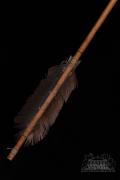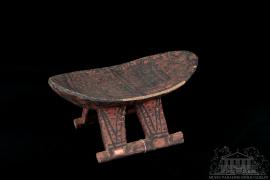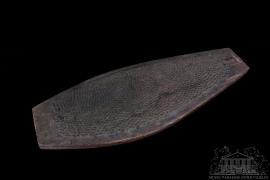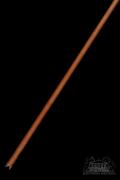Musée Alexandre-Franconie
Parà / Brasil
The oldest scientific institution in the Amazon area
The museum Emilio Goeldi is a research institute related to the Brazilian Ministry of Science, Technology and Innovation (MCTI). It was founded in 1866 by naturalist Domingos Soares Ferreira Penna, in the Pará state capital city: Belém.
Since its creation, the museum activities have been divided up between the scientific study of natural and socio-cultural systems in the Amazon area, scientific communication, the diffusion of knowledge and collections from the region and formation.
All the results obtained in these fields make the museum Emilio Goeldi one of the most important research centres in Brazil.
3 places to be discovered
The museum is composed of 3 different places: a 5.4 hectares zoological and botanical park nested at the heart of the city of Belém and founded in 1895, the research campus created in 1978 on 10 hectares on the outskirts of the city and the Ferreira Penna scientific station established in 1998 in the Caxiuanã national forest.
The zoological and botanical park displays hundreds of vegetable and animal species inside monuments and buildings of the 19th and early 20th centuries. It houses the Jacques Huber aquarium (1911), the pavilion Domingos Soares Ferreira Penna (1879), known as 'Rocinha', where permanent and temporary exhibitions are presented, the science teaching collection Emilia Snethlage (1985) and the science library Clara Maria Galvão (1899).
Collections of reference for the Amazonian area
The museum scientific collections, kept on the research campus, are composed of more than 4.5 million artefacts. They deal about botanic, zoology, archaeology, ethnography, linguistic, palaeontology, mineral sciences and a large collection of books and archives. These collections are one of the main sources of information for studies on biodiversity and human societies in the Amazon area.
The archaeology and ethnography collections are listed as historical and artistic heritage of the country. The collections of ethnographical objects began when the museum was founded, with donations of travellers and researchers at first, and then with an intensive collection program led by the German anthropologist Nimuendaju Curt. Since 1950, they have grown more and more numerous thanks to the field work done by anthropologist and researchers of the museum. The ethnographic currently amounts to 15.000 objects representing the material culture of 119 native groups of the Amazon.
> The museum missions
- conduct scientific research
- promote scientifc innovation
- teach and train
- safeguard collections and knowledge
- communicate in the field of natural sciences and humanities, in relation to the Amazonian area











